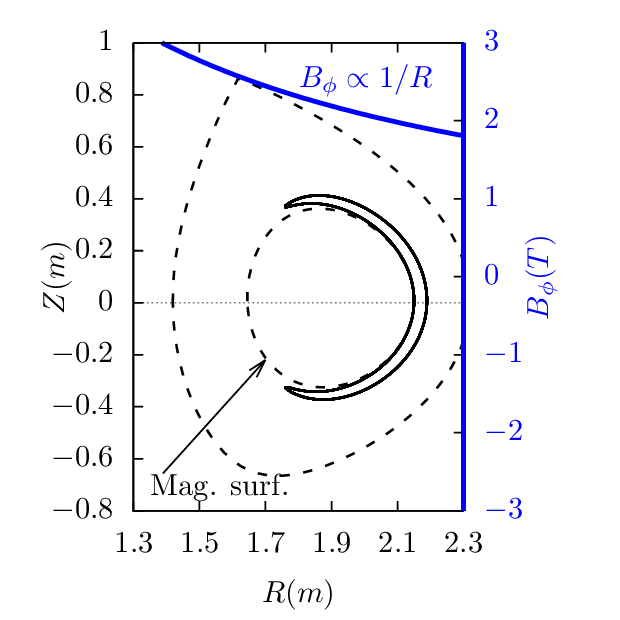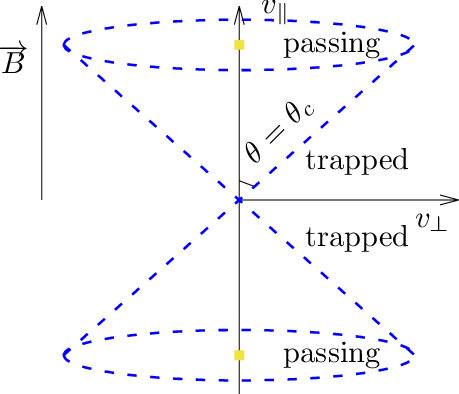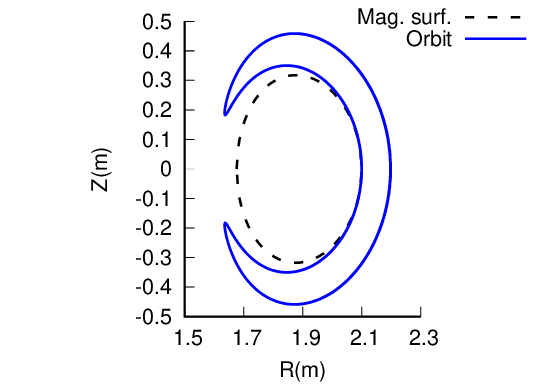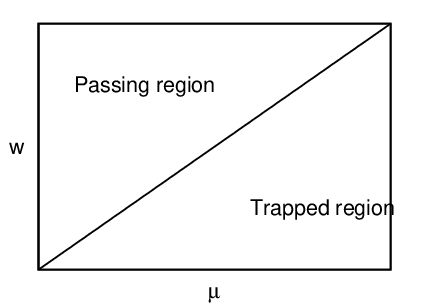
An approximate condition determining whether a particle is trapped or circulating can be obtained by using the conservation of magnetic moment and kinetic energy, and assuming the guiding center orbit is along the magnetic field line (zero-width orbit approximation, which is a proper approximation for low-energy particles whose orbit width is small, as is shown in Fig. 13).

In this approximation, the orbit remains on a magnetic surface. The critical condition for a particle to be trapped/circulating is given by
 | (76) |
where v⊥ is the perpendicular (to the magnetic field) velocity of the particle at the location where the strength of the magnetic field is B, Bmax is the maximum value of the magentic field on the same magnetic surface where the particle moves. Define 𝜃 = arccos(v∥∕v), which is the pitch angle of velocity with respect to the local magnetic field, then Eq. (76) is written as
 | (77) |
Define
 | (78) |
then particles with 𝜃c < 𝜃 < π − 𝜃c can not reach the point of the maximum magnetic field of the same magnetic surface and thus they are trapped particles. Otherwise, they are circulating particles. In velocity space (v∥,v⊥), the trapped and circulating region are shown in Fig. 14.

Note that the trapped-circulating boundary given in Fig. 14 is determined based on the assumption that the guiding center motion does not deviate from a magnetic surface. However, the actual guiding center orbit does not remain on the same magnetic surface, so the above result can be wrong when applied to some particles. An example is given in Fig. 15, where the numerical results show that the particle is actually trapped but the approximate condition indicate that the particle is circulating.

At a given radial location, in terms of (w,μ) coordinates, where w is the kinetic energy, the trapped passing boundary is shown in Fig. 16.
